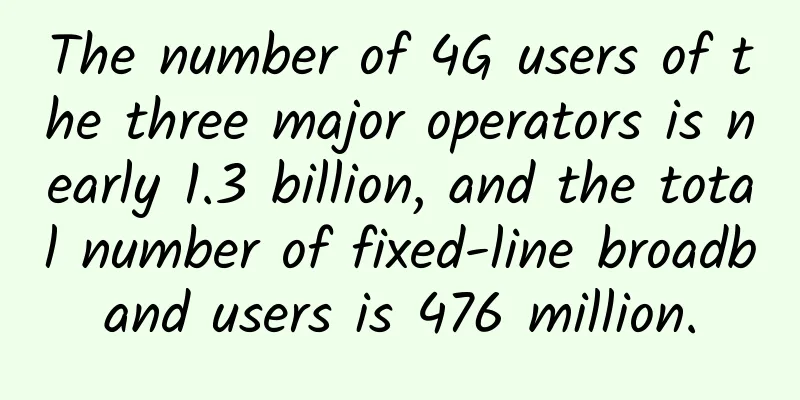What is Wi-Fi 6?

|
Wi-Fi plays an indispensable role in modern people's lives. Now when you visit someone's home as a guest, people will definitely ask a question: "What is your Wi-Fi password?" At the end of last year, the Wi-Fi Alliance announced a change in the naming method of Wi-Fi. The complicated naming method no longer exists. Wi-Fi 6 (the original 802.11.ax) will be the name of the next generation Wi-Fi standard. The 802.11a naming format that has been used since 1999 has officially withdrawn from the stage of history.
In addition to the new name, Wi-Fi 6 also brings many benefits, and it is not just a simple speed increase. Wi-Fi 6 will enter people's lives this year. Your next mobile phone or laptop may support Wi-Fi 6. It might be a good idea to learn about it in advance. How fast is Wi-Fi 6? The short answer is: 9.6 Gbps. For context, Wi-Fi 5 is 3.5 Gbps, which is a significant improvement. But the more realistic answer is: this speed is only the theoretical maximum, which is difficult to achieve in real life. Even if it can be achieved, it is estimated that your network speed will not meet the standard. But the fact that Wi-Fi 6 is delivering speed improvements is still important because the 9.6 Gbps speeds may not be exclusive to a single device, but can be distributed across all devices on the entire network, meaning each device will potentially get faster speeds. The most important thing about Wi-Fi 6 is not the speed improvement Arguably, the most important improvement of Wi-Fi 6 is reducing congestion and allowing more devices to connect to the network. Wi-Fi 6 does this using a technology called MU-MIMO (Multi-User Multiple Input Multiple Output), which allows a router to communicate with multiple devices at the same time, rather than one at a time. Currently, MU-MIMO allows a router to communicate with four devices at a time, and Wi-Fi 6 will allow communication with up to eight devices. Wi-Fi 6 also utilizes other technologies such as OFDMA (Orthogonal Frequency Division Multiple Access) and transmit beamforming, both of which work to improve efficiency and network capacity, respectively. In summary, Wi-Fi 6 allows routers to communicate with more devices at the same time, and also allows routers to send data to multiple devices in the same broadcast. The purpose of all these technologies is to solve the network congestion problem caused by a large number of devices connected to the network, which is very important for modern life. According to a survey, when Wi-Fi 5 was first introduced, the average American household had about five Wi-Fi devices. Now, the average American household has 9 Wi-Fi devices, and some companies predict that this number will reach 50 in a few years. Wi-Fi 6 will also provide a better experience in places with large numbers of people, with the Wi-Fi Alliance specifically mentioning retailers, apartment buildings, transportation hubs, and sports stadiums. Wi-Fi 6 can also improve battery life Another new technology in Wi-Fi 6 allows devices to plan their communications with routers, reducing the time needed to keep antennas powered up to transmit and search for signals, which means less battery drain and improved battery life. This technology is called Target Wake Time, and it allows the router to schedule communication times with devices. But this technology is not helpful for all devices. For example, your laptop needs constant Internet access, so it is unlikely to benefit too much from this feature (perhaps it will be more affected when it goes to sleep). This technology is more beneficial for small, low-power devices that occasionally need to update their status, such as sensors placed in the home to monitor gas leaks or smart homes. Wi-Fi 6 also means better security Last year, Wi-Fi technology received its biggest security update in a decade with support for a new security protocol, WPA3, which makes it harder for hackers to crack passwords by constantly guessing them, and even if hackers do manage to get the password, it makes some data less useful. Current devices and routers can support WPA3, but it is not mandatory. However, Wi-Fi 6 devices must use WPA3 to be certified by the Wi-Fi Alliance, so most Wi-Fi 6 devices will have stronger security once the certification program starts. How can I use Wi-Fi 6? You have to buy new equipment to use Wi-Fi 6. Because Wi-Fi technology updates rely on new hardware, not just software, you need to buy new phones, laptops, etc., and of course a router that supports Wi-Fi 6, to use the new version of Wi-Fi. When will Wi-Fi 6 arrive? Devices that support Wi-Fi 6 are still in their infancy, and although you can buy routers that support Wi-Fi 6 now, they are very expensive. A few laptops also support Wi-Fi 6, but it is obviously far from being popular. However, this year, high-end flagship smartphones will begin to deploy Wi-Fi 6. Qualcomm's flagship processor Snapdragon 855 already supports Wi-Fi 6, but the presence of Snapdragon 855 does not guarantee that the phone will support Wi-Fi 6, but the possibility is greater: for example, Samsung's Galaxy S10 is equipped with Snapdragon 855, which supports Wi-Fi 6. The Wi-Fi Alliance will launch its Wi-Fi 6 certification program this fall to ensure the compatibility of Wi-Fi devices. Although devices do not necessarily have to pass the certification, the launch of the certification means that the industry is ready for the arrival of Wi-Fi 6, and it is estimated that more devices will support Wi-Fi 6 next year. Do you need Wi-Fi 6? Upgrading to the new Wi-Fi 6 standard is certainly a good thing, but obviously not everyone needs it. If your internet speed is far from a gigabit, Wi-Fi 6 may not be of much use to you. In addition, even in environments with a large number of connected devices, such as shopping malls, offices or public buildings, to fully utilize the benefits of Wi-Fi 6, all devices on the network must support the standard. If your current router only supports Wi-Fi 4 (802.11n) or earlier standards, it might be a better choice to upgrade it to support Wi-Fi 5 first. It might be a better choice to wait until the price of Wi-Fi 6 routers drops before considering it. |
<<: 10 IT skills that are getting paid the most today
>>: How does the HTTP protocol achieve “secret interaction”?
Recommend
SD-WAN & SASE market grew 30%, but what are the challenges behind it?
According to the latest "SASE & SD-WAN &...
DNS message format for network learning
[[398925]] This article is reprinted from the WeC...
Kunpeng Technology Open Day came to Shenzhen Futian to see how cloud-intelligence integration will open up the future
[51CTO.com original article] At 2:00 pm this Satu...
A brief discussion on Telemetry network telemetry traffic analysis technology
·Introduction· With the rapid development of clo...
What benefits will 5G technology bring to smart fire protection construction?
[[346255]] On the one hand, it is because various...
5G will change the world. What does it mean for regulations?
The Fourth Industrial Revolution will see the lin...
5G will change my country's intellectual property landscape
"In addition to bringing wider, higher and s...
Essential for operation and maintenance: automated script for batch SSH password-free login of Linux machines
During the operation and maintenance of a large p...
New infrastructure accelerates digital transformation and network security requires the principle of "three non-dependence"
Since the beginning of this year, as the real eco...
5G cannot enhance industry?
There are already more than 1,100 “5G+Industrial ...
Starting next year, your home router should be upgraded to Wi-Fi 6!
This article is reproduced from Leiphone.com. If ...
RAKsmart Double 11 Spend $10 and get $10, VPS 30% off from $0.99/month, cloud server 15% off
RAKsmart launched the Double 11 Carnival pre-sale...
IBM acquires Red Hat. Will it be its rival, Google or Huawei? Let's wait and see.
Recently, IBM completed the acquisition of all is...
Making WAN ubiquitous: SD-WAN still has huge room for development
[[177476]] The impact of globalization has become...
UFOVPS Spring Festival 50% off, top up 200 yuan to get 30 yuan, Japan/Hong Kong CN2 GIA/US high-defense VPS monthly payment starts from 19 yuan
UFOVPS has launched a special promotion for the S...









